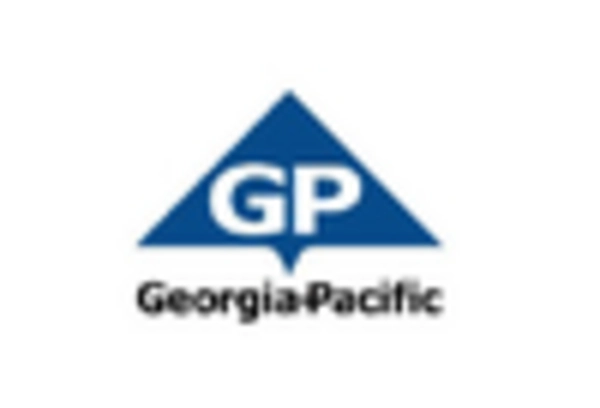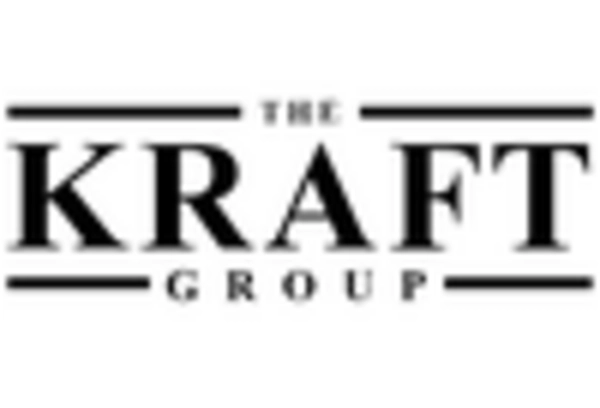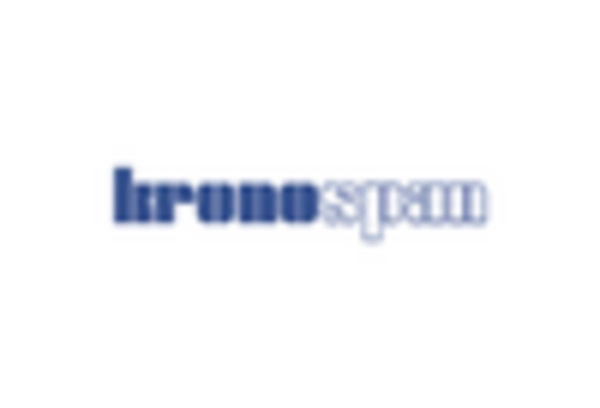Technological Innovations
Technological advancements in manufacturing processes are likely to enhance the performance characteristics of phenolic panels, thereby driving growth in the Phenolic Panel Market. Innovations such as improved resin formulations and advanced production techniques can lead to panels that are lighter, stronger, and more resistant to environmental stressors. The integration of smart technologies into building materials is also emerging, with phenolic panels potentially incorporating sensors for monitoring structural integrity. This evolution in technology could position the Phenolic Panel Market favorably, as builders increasingly seek high-performance materials that offer both functionality and longevity.
Sustainability Initiatives
The increasing emphasis on sustainability within the construction sector appears to be a pivotal driver for the Phenolic Panel Market. As environmental regulations tighten, builders and architects are seeking materials that not only meet performance standards but also align with eco-friendly practices. Phenolic panels, known for their durability and low environmental impact, are gaining traction. The market for sustainable building materials is projected to grow at a compound annual growth rate of approximately 10% over the next five years. This trend suggests that the Phenolic Panel Market could see a significant uptick in demand as more projects prioritize sustainable materials.
Growth in Prefabricated Construction
The trend towards prefabricated construction is emerging as a significant driver for the Phenolic Panel Market. Prefabrication offers numerous advantages, including reduced construction time and lower labor costs. Phenolic panels, being lightweight and easy to install, are particularly suited for this method. As the prefabricated construction market is projected to grow at a rate of around 7% annually, the Phenolic Panel Market could benefit from this shift. The ability to produce high-quality panels off-site and assemble them quickly on-site aligns with the growing demand for efficiency in construction practices.
Regulatory Support for Energy Efficiency
Government regulations aimed at enhancing energy efficiency in buildings are likely to bolster the Phenolic Panel Market. Many regions are implementing stricter building codes that mandate the use of materials with superior thermal insulation properties. Phenolic panels, with their excellent insulation capabilities, are well-positioned to meet these requirements. As energy efficiency becomes a priority for new constructions and renovations, the demand for phenolic panels may rise. This regulatory landscape suggests a favorable environment for the Phenolic Panel Market, as stakeholders seek compliant and energy-efficient building solutions.
Rising Demand in Commercial Construction
The Phenolic Panel Market is experiencing a surge in demand, particularly within the commercial construction sector. As urbanization accelerates, the need for efficient and aesthetically pleasing building materials is becoming more pronounced. Phenolic panels are favored for their versatility and design flexibility, making them suitable for a variety of applications, from office buildings to retail spaces. Recent data indicates that the commercial construction market is expected to expand by over 8% annually, which could translate into increased opportunities for the Phenolic Panel Market as developers seek innovative solutions to meet modern architectural demands.

















Leave a Comment